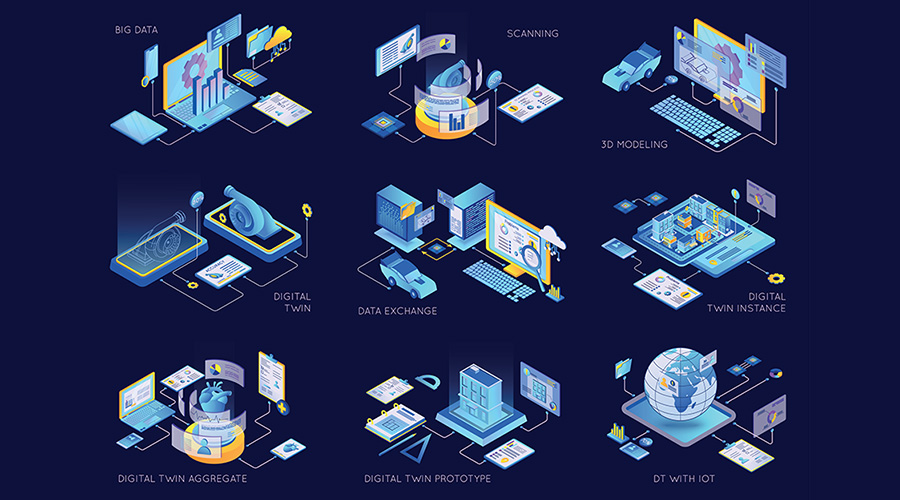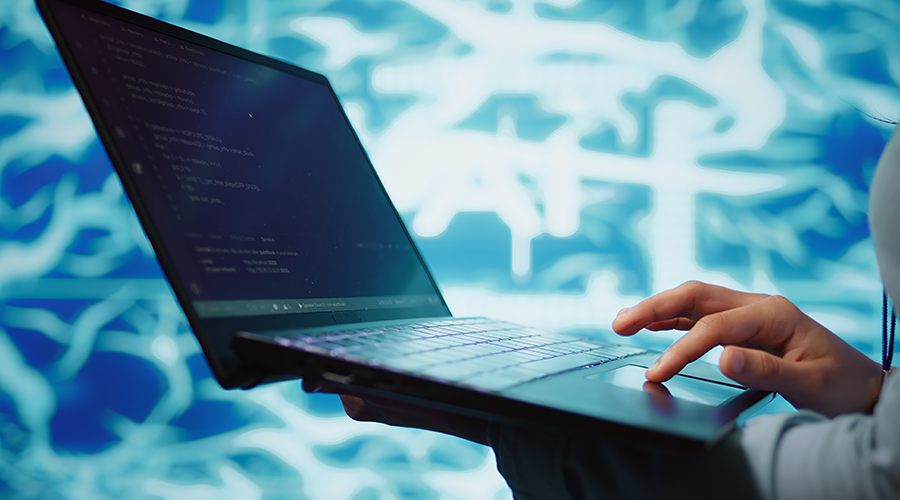7 Myths of the Electronic Age
To get the benefits of powerful software tools, facility executives must have a clear idea of what they’re getting into
Web-based technologies are changing the way that facilities are operated and managed. They are providing facility executives with tools that were unheard of just a few years ago. They are giving managers, operators and building occupants access to a broad range of information they can use in making better decisions. But they also have been blamed for everything that goes wrong in a facility, from poor maintenance response time to high operating costs.
Although a range of factors determines the success of computer-based facility management applications, many common problems can be traced to myths involving the use of computers. By identifying and addressing these myths before starting a facility management automation project, facility executives can develop a better understanding of the process and the benefits, avoiding problems associated with facility management automation.
Myth 1: Computers Will Solve a Facility’s Problems
One of the most common solutions offered for inefficient and ineffective facility management operations is computerization. What has contributed to this myth is the widespread recognition that computers are fast and efficient. Therefore, the reasoning goes, by using computers in a facility management operation, that operation will become faster and more efficient.
What this reasoning fails to recognize is that facility management operations are efficient or inefficient, effective or ineffective because of business practices and rules, not because of data processing capabilities. Taking ineffective business processes and transferring them to a computer will not improve the operation. About all it will do is provide quicker feedback to the system managers as to how inefficient and ineffective the operation really is.
Before looking to computers and Web-based technologies to improve operations, facility executives must review the business processes and rules used to run the facility. What way do they do it? What way do they want to do it? Are there fundamental changes in these processes that could improve efficiency or effectiveness? If so, those changes must be made before any attempt at computerization. Computers are not the solution to a problem, but they can be an effective tool in implementing solutions.
Myth 2: All You Have To Do Is Buy the Right Software
A spinoff of Myth 1, this myth springs from the belief that problems can be solved simply by applying the latest technology. It is the quick-fix approach. Those who believe this myth often end up buying several systems. When the first system fails to solve the problems, they conclude that they simply didn’t buy the right system, so they buy another one, then another one. It is never ending because they are looking at the wrong problem.
What believers of this myth fail to recognize is that computers do not solve operational problems. In fact, they can create their own operational problems: data entry, data verification and correction, and new procedures that are forced on those who must use the new system.
Recognizing that software is a tool and not a solution changes the focus from the purchase of software to how a different software package can be used to the benefit of the facility. That focus allows facility executives to select the system that best meets the needs of the operation.
Myth 3: Facility Management Automation Is Plug and Play
Thanks in part to overzealous software sales representatives, and a lack of understanding of computer-based facility management systems, many facility executives believe that both stand-alone and Web-based facility management systems are plug and play. One simply buys the hardware, installs the software, connects the system and has instant facility management automation. With Web-based systems, it is even easier because all the facility executive has to do is plug into the vendor’s system.
In some ways, it’s easy to understand this myth. Computer hardware has become so simplified and standardized that much of it is in fact plug and play. The same is true for most office-based software. But things aren’t that simple in facility management applications.
For one thing, facility management software often must interface with equipment and sensors located throughout the facility. This equipment and these sensors are manufactured by different companies, each of which may use its own protocol for producing and transmitting data.
Facility management software must also interface with other software applications, each with its own standards. And if the facility management application is Web-based, the system must be able to communicate with a host application in a format that allows the transfer of information.
The adoption of standards for system interoperability is helping to make the process of getting a system up and running simpler. But even with the interoperability standards, systems have a long way to go before they are truly plug and play.
Myth 4: Software Is The Biggest Expense
When developing a budget for facility management applications, facility executives tend to look at project costs in terms of only the hardware and software that need to be purchased. That’s often true with other applications, but facility management software systems are different.
The strength of facility management software lies in its ability to process information. Unlike typical office applications, facility management applications require a significant database of information. Facility construction data, building drawings, equipment inventory, space inventory — any or all of these may be required for the software to achieve its potential. It takes time to gather and enter this data — a significant amount of time. The process can be very costly.
Those aren’t the only set of extra costs to be aware of. The adoption of computer-based facility management systems will bring changes in business processes and rules — sometimes major changes. Making those changes can be time consuming and costly.
What’s more, personnel must be trained to use and maintain the new system. Training costs vary widely — between $500 and $5,000 per person, depending on their duties with the new system. If on-the-job training is the only training provided, performance will suffer.
Taken together, these costs typically exceed the purchase cost of a facility management system by a factor of two or more. Failing to budget for these costs can doom a new system before it gets started.
Myth 5: The System Runs Itself
This myth, like Myth 3, is the result of overly optimistic system salespeople who have convinced facility executives that their system is so simple to use that it runs itself. Once the system is installed, all the user has to do is enter data and run reports. No ongoing attention is required.
The reality is that all facility management systems need ongoing attention. In addition to the routine tasks of data entry and report generation, systems must be updated every time a change is made to the facility. Operations and activities must be verified regularly to ensure that the system is operating as intended. If the system is a building automation system that controls HVAC, electrical and other building equipment, then all data and control points must be tested, verified and calibrated annually. System data must be backed up regularly.
Failure to perform these tasks on a regular basis puts the facility at risk of working with obsolete data. And failing to plan for these activities just about guarantees they won’t be performed in a timely manner.
Myth 6: Garbage In, Gold Out
In too many instances, data generated by a computer is blindly accepted as being correct, as if the computer had magical powers. But if there are errors in the data entered into the system, then the information generated by the computer will not be completely accurate.
Another problem is intentional or accidental misrepresentation of data. One organization reported it had cut the response time of its maintenance department from five days to one shortly after going to a computer-based work order system: The data showed that, on average, each work order was completed within one day of receipt. But it turned out that maintenance personnel were entering the date they received the work order, not the date it was called in. Work orders sat for an average of three days before they were assigned to a mechanic.
There also is a tendency to misinterpret data generated by the computer. In some cases, the wrong conclusions are drawn by those using the computer-generated information. In other cases, people make incorrect assumptions about what the computer data is telling them. The end result is that conclusions may be drawn — and decisions made — that are not supported by conditions in the facility.
The best defense against falling victim to this myth is to look carefully at the information generated by the system. Be sure it is supported by what you are witnessing firsthand in the facility or by feedback you receive from maintenance personnel and building occupants.
Myth 7: You Don’t Have To Worry About Security
Too often, facility executives are lax in protecting data and operations from accidental damage or intentional hacking. This is particularly true for Web-based systems where it is assumed that security is the responsibility of the host.
Contributing to this myth is a widespread belief that no one would ever have the motivation to hack into a facility management system. The truth is that some people will hack into a system simply because it is there. Other people do have real incentives to get into the system, either to modify financial data or to do as much damage as possible for revenge.
System security must be taken into consideration starting early in the design phase of any system. But it is also an ongoing concern that requires the attention of everyone involved with the system, from system managers through the individual user. Activities such as frequently backing up data, controlling user access, monitoring operations and implementing a well-designed password system will promote system security.
James Piper is a consultant and writer with more than 25 years of experience in the facilities field.
Related Topics:











